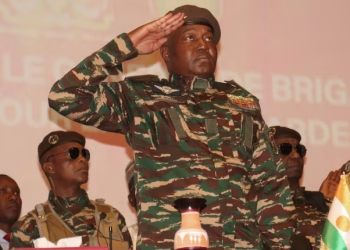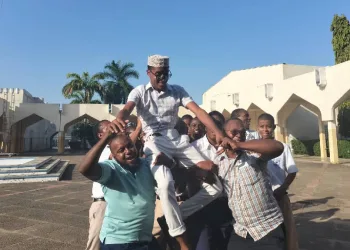Renewed violence erupted in Kenya on Tuesday as anti-government protests demanding President William Ruto’s resignation resulted in yet another fatality. Protests took place across at least 23 of Kenya’s 47 counties, including major cities such as Nairobi, Mombasa, and Kisumu.
This latest death brings the total fatalities to at least 50 since demonstrations began a month ago, according to the Kenya National Commission on Human Rights. The unrest was initially sparked by proposed tax hikes, which Ruto later withdrew. However, public anger has since transformed into a broader condemnation of his administration, with activists calling for systemic reforms to tackle corruption and poor governance.
Clashes broke out in Kitengela, where police fired on protesters throwing rocks, resulting in one death from a head wound. Similar violent scenes were reported in Nairobi’s city center, where riot police used tear gas to disperse demonstrators.
Despite Ruto’s efforts to quell the unrest by withdrawing the tax bill and dismissing Cabinet members, defiance from protesters has only intensified. Coordinated largely through online platforms, the protest movement demands Ruto’s resignation and has rejected calls for dialogue.
The ongoing violence highlights a deepening crisis in Kenya, with significant economic and social disruptions. Businesses have been severely affected, and daily life has descended into chaos, necessitating an urgent search for a peaceful resolution.
Over the past four weeks, the protests have cost the economy billions of Kenyan shillings, with many businesses shuttered and daily activities halted. The confrontations between youth and security forces have involved gunfire, tear gas, and police batons, leaving shops closed and streets deserted.
Ruto has accused non-governmental organizations, particularly the Ford Foundation, of inciting the protests. Business leaders warn that the unrest poses a serious threat to the economy, with calls for peace to restore normalcy.
In Nakuru, police even stormed a church to disperse protesters seeking refuge. In Kakamega, demonstrators disarmed individuals armed with batons who attempted to intimidate them.
According to the Kenya National Commission on Human Rights, 50 people have died in connection with the protests, and 413 have been injured. Human rights organizations are urging Ruto to implement a “zero-tolerance” policy against human rights violations committed by security forces, as reports of abductions, illegal arrests, and torture continue.
The Interior Ministry has claimed that the protests have been infiltrated by criminals, prompting businesses to remain closed due to fears of looting, reminiscent of incidents from the previous month.
In Nairobi, streets turned into battlegrounds as youths clashed with police, who responded with tear gas to disperse the crowds. Major streets were deserted as workers fled the chaos, and local business communities joined forces with police to protect their establishments.
As the protests spread, demonstrators set bonfires and blocked roads in various regions, resulting in widespread disruption. Reports of police using live ammunition have surfaced, escalating tensions further.
The escalating crisis continues to pose significant challenges to governance and public order in Kenya.
Protests Call for President Ruto’s Resignation
Plugin Install : Subscribe Push Notification need OneSignal plugin to be installed.















